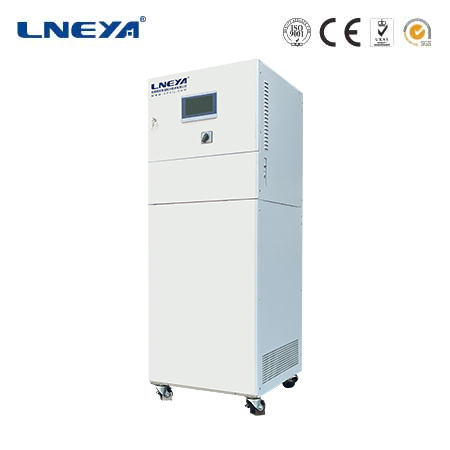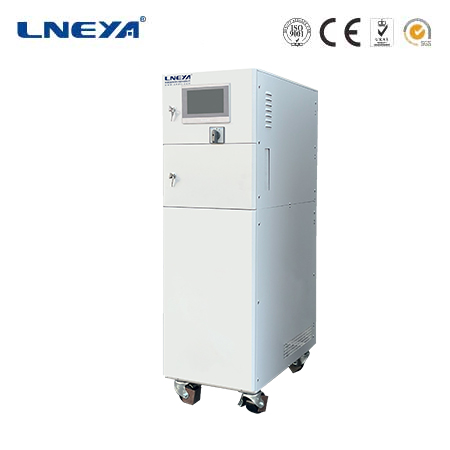3 ton water chiller
3 Ton Water Chiller: A Detailed Introduction
A 3 – ton water chiller is a device designed to remove heat from water, providing a continuous supply of chilled water for various applications. The “3 – ton” in its name refers to its cooling capacity, which is equivalent to the amount of heat required to melt 3 tons of ice in 24 hours. In metric terms, a 3 – ton chiller has a cooling capacity of approximately 10.5 kW.

Working Principle
The operation of a 3 – ton water chiller is based on the vapor – compression refrigeration cycle.
Compression: The refrigerant, in a gaseous state, enters the compressor. The compressor increases the pressure and temperature of the refrigerant. This high – pressure, high – temperature refrigerant gas then moves to the next stage.
Condensation: The hot refrigerant gas flows into the condenser. Here, heat is transferred from the refrigerant to the surrounding environment. In air – cooled chillers, the heat is dissipated to the air through fins and fans. In water – cooled chillers, the heat is transferred to a cooling water loop. As the refrigerant loses heat, it condenses into a high – pressure liquid.
Expansion: The high – pressure liquid refrigerant passes through an expansion valve. The expansion valve reduces the pressure of the refrigerant, causing it to expand and cool down significantly.
Evaporation: The low – pressure, cold refrigerant enters the evaporator. In the evaporator, the refrigerant absorbs heat from the water that needs to be chilled. As the refrigerant absorbs heat, it vaporizes back into a gas. The chilled water is then circulated to the areas where cooling is required, such as air – handling units in buildings or industrial processes.
Key Components
Compressor: This is the heart of the chiller. It compresses the refrigerant, increasing its pressure and temperature. There are different types of compressors used in water chillers, such as reciprocating, scroll, screw, and centrifugal compressors. Each type has its own advantages in terms of efficiency, capacity control, and cost.

Condenser: It is responsible for rejecting the heat absorbed by the refrigerant during the evaporation process. Air – cooled condensers use ambient air to cool the refrigerant, while water – cooled condensers use a secondary water loop to transfer the heat away.
Expansion Valve: This component controls the flow of the refrigerant into the evaporator and reduces its pressure. It ensures that the refrigerant enters the evaporator in the correct state for efficient heat absorption.
Evaporator: The evaporator is where the heat transfer from the water to the refrigerant takes place. It is designed to maximize the surface area of contact between the water and the refrigerant, enhancing the heat – transfer efficiency.
Types of 3 – Ton Water Chillers
Air – Cooled Water Chillers: These chillers are relatively easy to install as they do not require a complex water – cooling infrastructure. They are suitable for applications where space is limited and access to a water source for cooling is restricted. However, they are generally less energy – efficient than water – cooled chillers, especially in high – temperature environments, as the ambient air may not be able to dissipate the heat as effectively.
Water – Cooled Water Chillers: Water – cooled chillers are more energy – efficient, especially in large – scale applications. They use a cooling tower or a closed – loop water – cooling system to dissipate the heat from the refrigerant. These chillers are often used in commercial buildings, industrial facilities, and data centers where continuous and efficient cooling is required.
Applications
Commercial Buildings: In office buildings, hotels, and shopping malls, 3 – ton water chillers are used to provide cooling for air – conditioning systems. They ensure a comfortable indoor environment by removing heat from the air – handling units.
Industrial Processes: Many industrial processes generate heat and require cooling. For example, in the food and beverage industry, 3 – ton water chillers are used to cool production lines, storage tanks, and refrigeration systems. In the pharmaceutical industry, they are used to maintain the correct temperature for drug manufacturing and storage.
Data Centers: With the increasing demand for data storage and processing, data centers generate a large amount of heat. 3 – ton water chillers play a crucial role in cooling the servers and other equipment in data centers, ensuring their reliable operation.

Advantages
Energy – Efficient Cooling: Modern 3 – ton water chillers are designed with advanced technologies to optimize energy consumption. Variable – speed drives for compressors and fans can adjust the operation based on the cooling load, reducing energy waste.
Precise Temperature Control: These chillers can maintain a very accurate water temperature, which is essential for applications that require strict temperature control, such as in some industrial processes and data centers.
Reliable Operation: With high – quality components and robust designs, 3 – ton water chillers are built to operate continuously and reliably. Regular maintenance can further extend their lifespan and ensure consistent performance.
Factors to Consider When Choosing a 3 – Ton Water Chiller
Space Availability: Air – cooled chillers are more compact and can be installed in areas with limited space. Water – cooled chillers, on the other hand, require additional space for the cooling tower or the water – cooling system.
Energy Consumption: If energy costs are a concern, water – cooled chillers may be a better choice due to their higher energy efficiency. However, factors such as the local climate and the operating hours of the chiller should also be considered.
Maintenance Requirements: Air – cooled chillers generally have simpler maintenance requirements as they do not have a complex water – cooling system. Water – cooled chillers require regular maintenance of the cooling tower, water pumps, and the associated plumbing to prevent scaling, corrosion, and other issues.
In conclusion, a 3 – ton water chiller is a versatile and essential cooling device with a wide range of applications. Understanding its working principle, components, types, applications, advantages, and selection criteria is crucial for making an informed decision when choosing a chiller for a specific application.
Related recommendations
unit of chiller capacity
452Common Units of Chiller CapacityBritish Thermal Units per Hour (BTU/h)The British Thermal Unit (BTU) is a traditional unit of energy widely used in the United States and some other regions. One ...
View detailsWhat is the impact of the outlet temperature of the chilled water for a 100 ton chiller?
1038What is the impact of the outlet temperature of the chilled water for a 100 ton chiller? We often talk about the cooling capacity of a 100 ton chiller. In fact, the nominal cooling capa...
View detailsprocess chillers manufacturers
498Process Chillers Manufacturers: Driving Efficiency and Innovation Process chillers are indispensable in maintaining optimal temperatures in numerous industrial processes. Manufacturers of these...
View detailsindustrial water heater manufacturers
287Industrial water heater manufacturers play a pivotal role in meeting the diverse and demanding hot water requirements of various industrial sectors. These manufacturers combine engineering experti...
View details
 LNEYA Thermal Test Chillers
LNEYA Thermal Test Chillers







HelloPlease log in